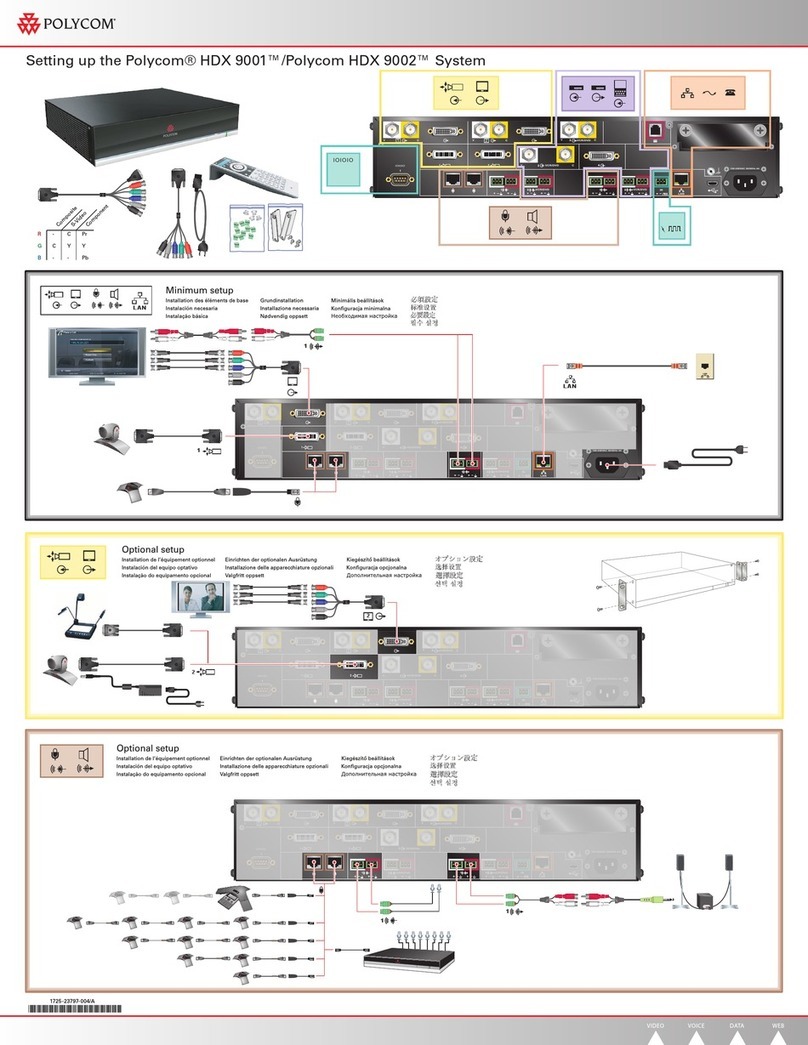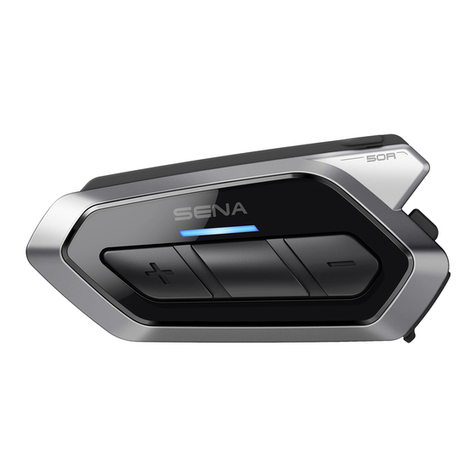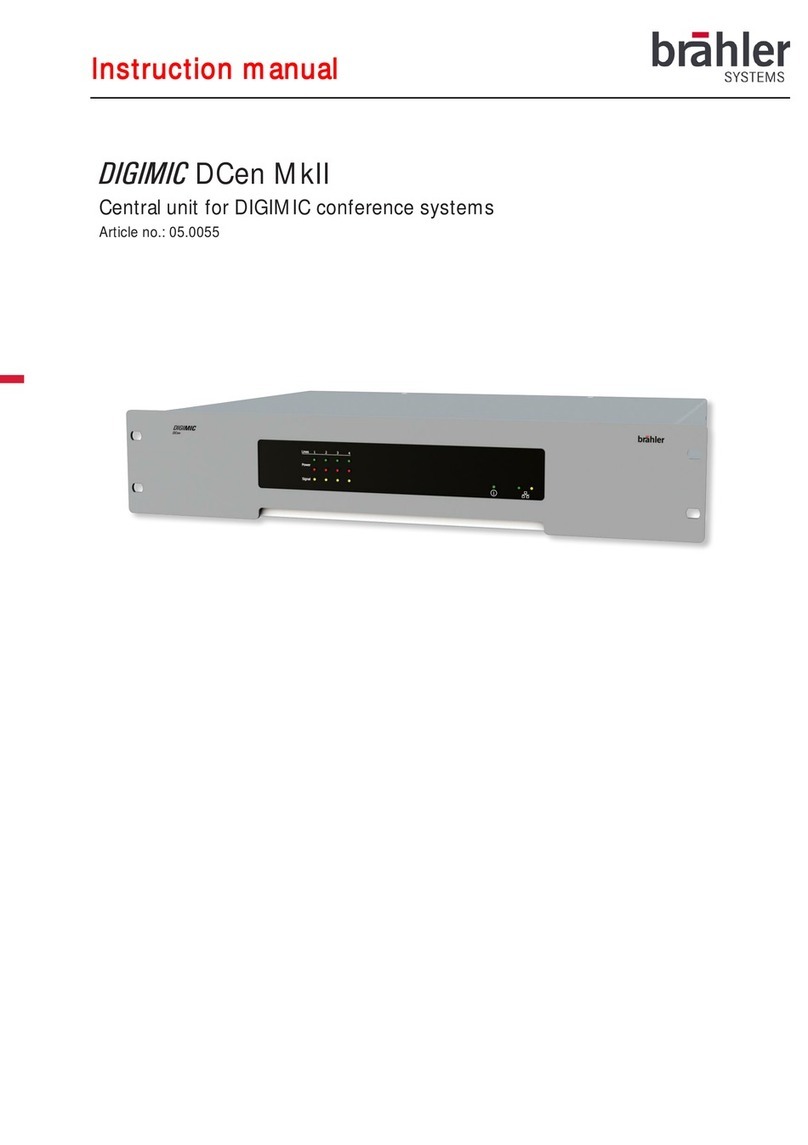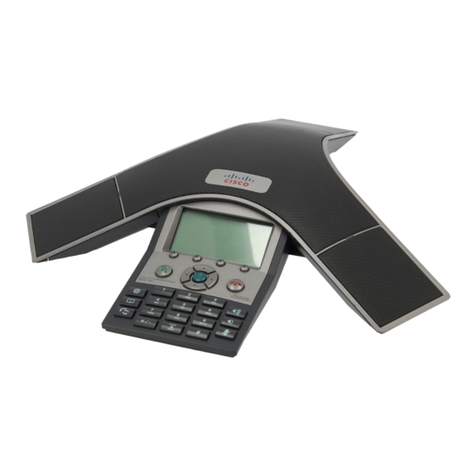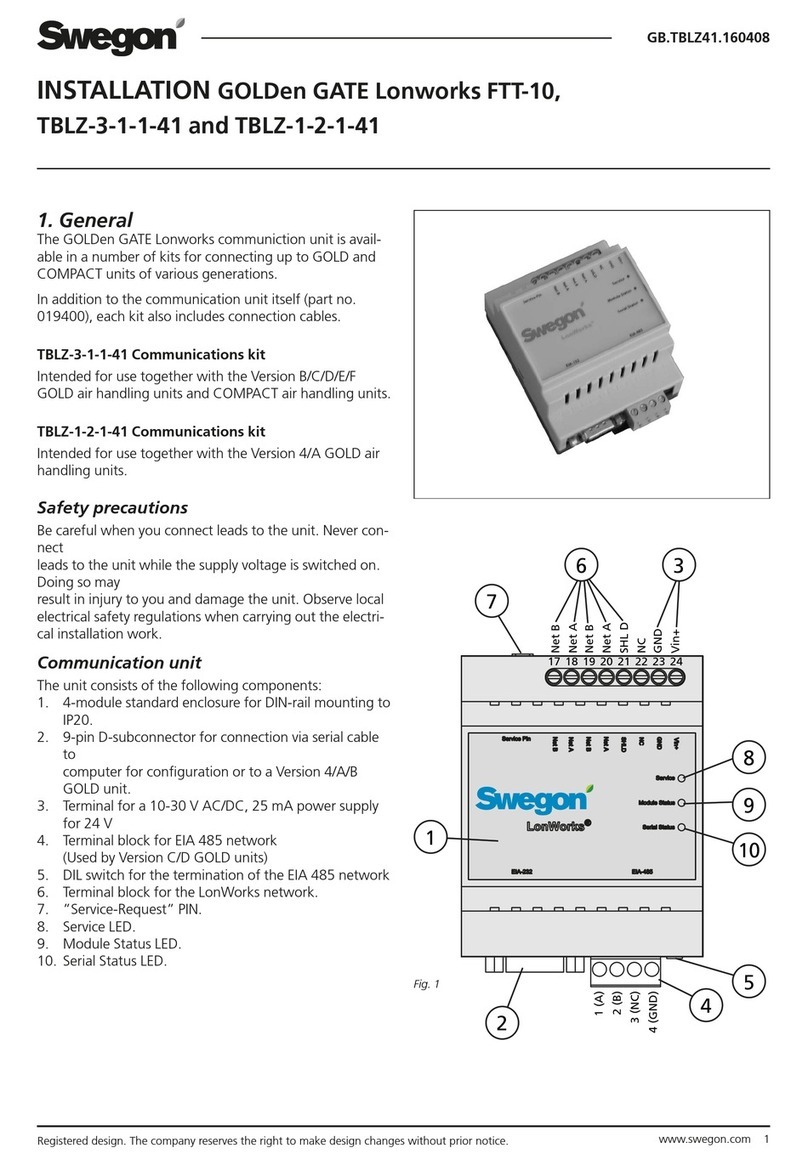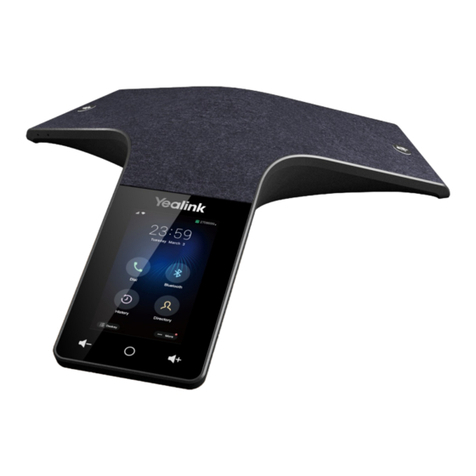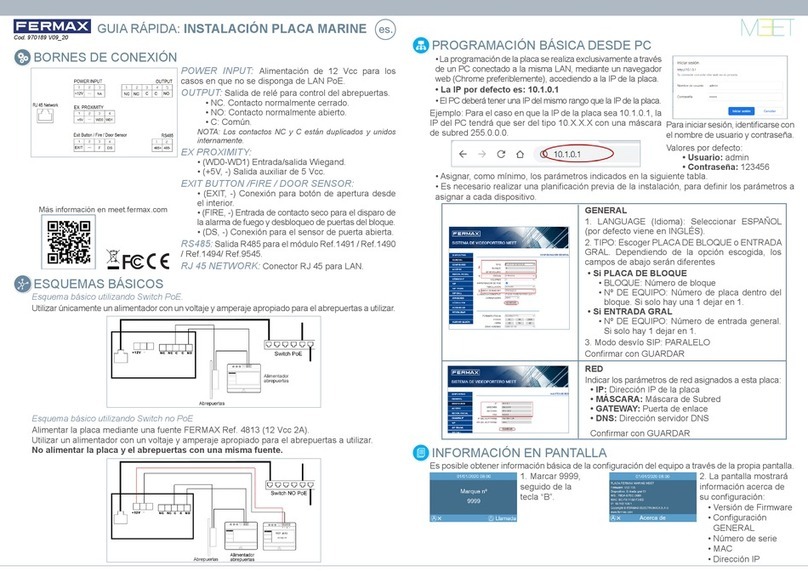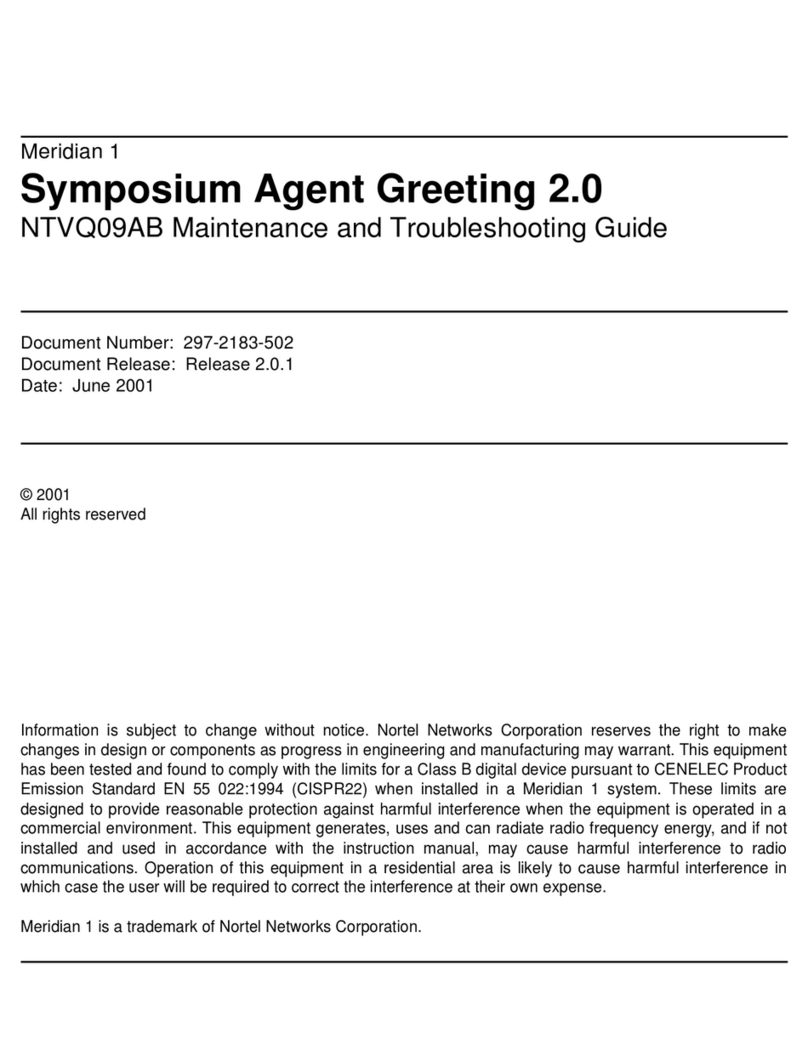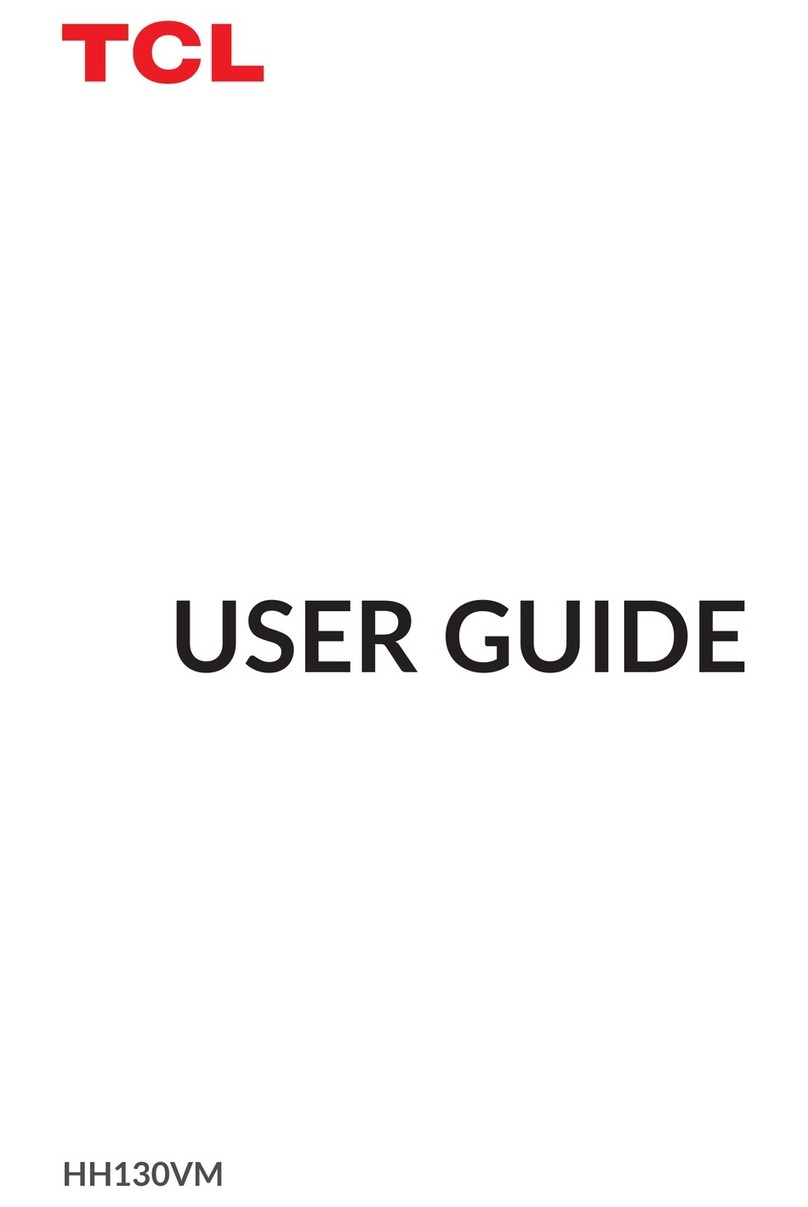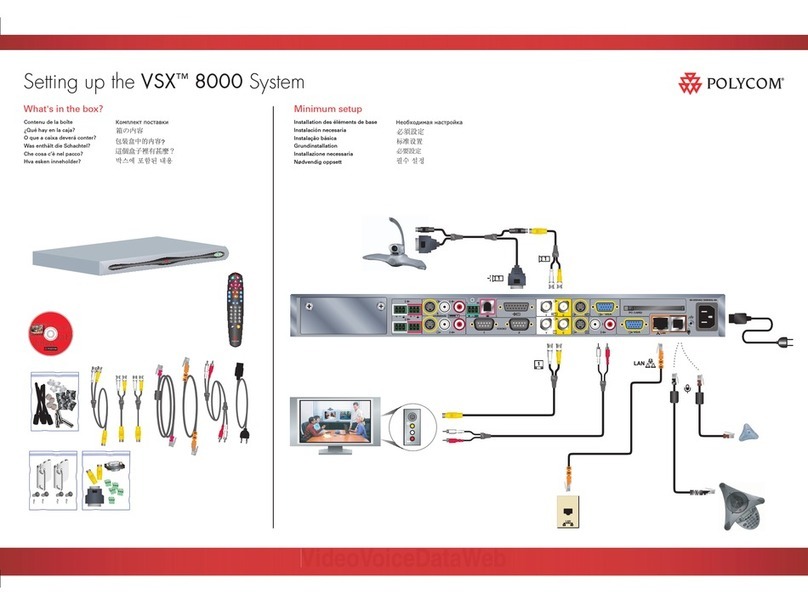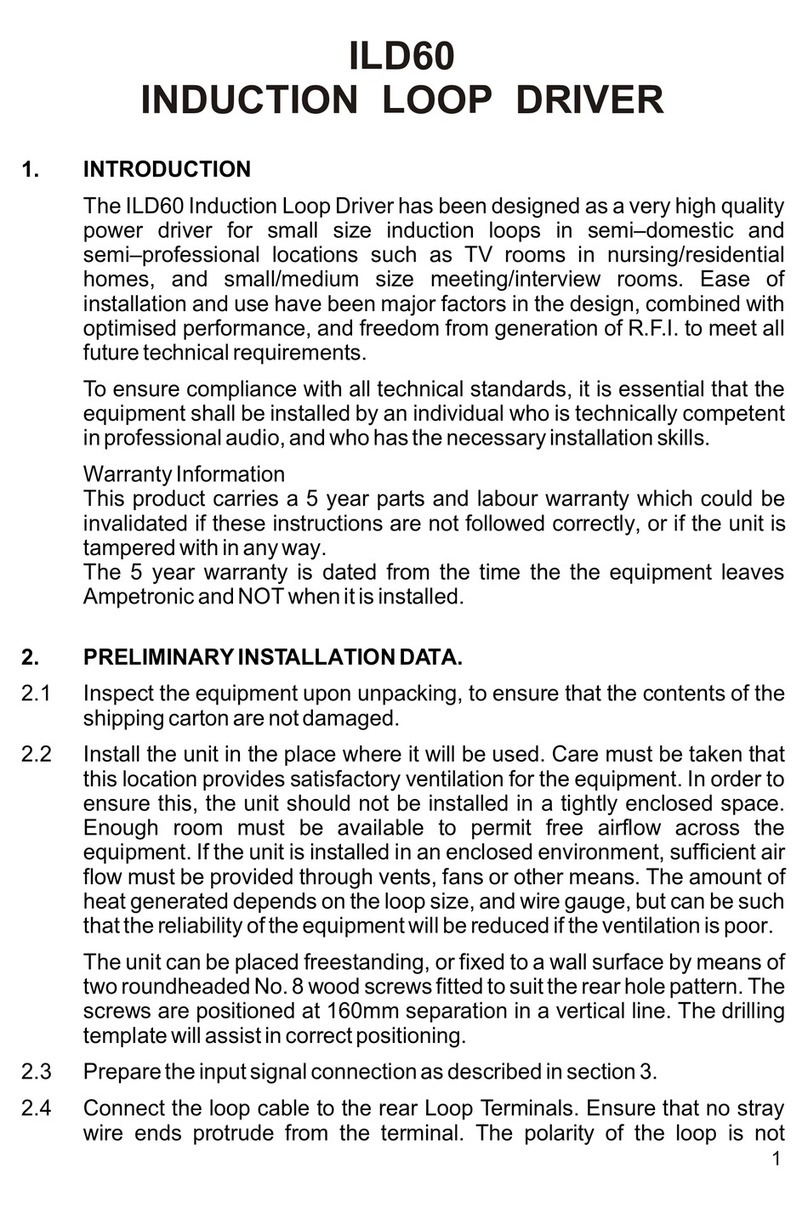GENASYS LRAD 500X-RE MMT Technical Document

LRAD 500X-RE MMT
EQUIPMENT MANUAL
500X-RE MMT
Catalog: LRAD-500X-RE-MMT-MANUAL
Part No.: 116666-00 Rev.07
Aircraft Models: HH-60, UH-1
Revised September 2020
Copyright, 2020, Genasys Inc.

LRAD-500X-RE MMT
Manual Part No.: 116666-00 Rev.07
ii
Table of Contents
1.0 System Description ................................................................................................................... 1
1.1 Introduction ......................................................................................................................... 1
1.2 Specifications ....................................................................................................................... 1
1.3 Functional Block Diagram ..................................................................................................... 5
1.4 Acoustic Performance .......................................................................................................... 6
1.5 LRAD-500X-RE MMT Features .............................................................................................. 9
1.5.1 Mount and Yoke Features ............................................................................................. 9
1.5.2 Head Unit Features ..................................................................................................... 11
1.5.3 Battery Box Features ................................................................................................... 13
1.6 Control Unit Features ......................................................................................................... 14
1.7 Recording Microphone Features ........................................................................................ 16
1.7.1 Microphone Feedback ................................................................................................ 16
1.8 Electrical Connections and Signals ..................................................................................... 17
2.0 Operating Limits ..................................................................................................................... 18
2.1 Operation Zones ................................................................................................................. 18
3.0 Normal Procedures ................................................................................................................ 19
3.1 Major Components ............................................................................................................ 19
3.2 Control Unit Setup .............................................................................................................. 20
3.3 Battery Charging and Status ............................................................................................... 21
3.4 Aircraft Cabin Loading and Unloading ............................................................................... 22
3.5 System Power Up and Shutdown ....................................................................................... 26
3.6 MP3 Loading and Playback................................................................................................. 27
3.7 Microphone Recording and Playback ................................................................................ 28
3.8 Microphone PTT Operations .............................................................................................. 29
3.9 Aux Input Operations ......................................................................................................... 29
4.0 Maintenance Procedures ....................................................................................................... 30
4.1 Troubleshooting ................................................................................................................. 30
4.2 Preventative Maintenance ................................................................................................. 31
4.3 Removing the Head Unit .................................................................................................... 32
4.4 Removing the Mounting Yoke ............................................................................................ 33
4.5 Battery Maintenance and Replacement ............................................................................ 34
4.5.1 Accessing Batteries ..................................................................................................... 34
4.5.2 Disconnecting and Replacing Batteries ....................................................................... 36
5.0 Recording Audio Files Using LRAD Normalizer Software ....................................................... 39
5.1 System Requirements ........................................................................................................ 39
5.2 Installing the Software ....................................................................................................... 39
5.3 Running the Software ........................................................................................................ 39
5.4 Recording an Audio File ..................................................................................................... 41
6.0 Technical Support ................................................................................................................... 43

LRAD-500X-RE MMT
Manual Part No.: 116666-00 Rev.07
1
1.0 System Description
1.1 Introduction
The LRAD-500X-RE MMT consists of a head unit with four acoustic drivers, helicopter mounting
equipment, and a control unit. The control unit includes a built-in digital media (MP3) player
and a handheld microphone as well as controls for audio volume, power, voice boost and beam
width.
Designed specifically for airborne operation, the LRAD-500X-RE MMT is equipped with a
mounting plate and yoke compatible with either HH-60 or UH-1 helicopter models.
The LRAD-500X-RE MMT is capable of broadcasting prerecorded audio files through the control
unit and live speech through the handheld microphone. Additionally, alert tones designed to
gain attention and/or irritate can be played at extreme volume levels for effective use over
distance.
Audio from the LRAD-500X-RE MMT is amplified and intelligibly projected for effective in-flight
communications at distances of 650 meters or more. The acoustic transducer module is
designed to significantly minimize the acoustic sound pressure levels (SPLs) at the rear of the
device, making for safe operation with hearing protection, such as foam earplugs.
1.2 Specifications
Weight
Head Unit, Control Unit, and Microphone
51.8 lbs.
Yoke
25.6 lbs.
Yoke, Head Unit, Control Unit, and Microphone
77.4 lbs.
Mounting Plate and Battery Box
HH-60: 98.6 lbs.
UH-1: 104.2 lbs.
Total System Weight
HH-60: 176.0 lbs.
UH-1: 181.6 lbs.
Dimensions
Head Unit
24.8” W x 25.5” H x 12.4” D
Overall
HH-60: 30.0” W x 44.0” H x 24.0” D
UH-1: 30.5” W x 44.0” H x 23.1” D
Acoustic
Maximum Continuous Output
149 dB SPL @ 1 meter, A-weighted
Maximum Peak Output
154 dB SPL @ 1 meter, C-weighted
Acoustic Beam Width
Narrow Setting: +/- 15°
Wide Setting: +/- 30°

LRAD-500X-RE MMT
Manual Part No.: 116666-00 Rev.07
2
Electrical
Normal Power Consumption
60 Watts (Voice content)
Peak Power Consumption
265 Watts (Alert tone)
Electromagnetic Compatibility
FCC Class A radiated and conducted emissions
Battery (MFG Part Number: MK Battery ES33-12)
Chemistry
Sealed Lead-Acid, AGM
Capacity
33 Ah
Normal Individual Battery Voltage
12 VDC
Charger Input
100-230 VAC 50/60 Hz
Charger Output
24 VDC 7 A
Typical Charge Time from 25% Capacity
4-6 Hours
Max Volume Alert Tone Runtime on Full
Charge
1 Hour*
Max Volume Voice Message Runtime on Full
Charge
1.5 Hours*
*Runtime depends greatly on the files being played and the frequency of the playback. Voice
messages typically use less power than constant tones.
Environmental
Random Vibration
MIL-STD-810F, Method 514-4, Wheeled
Vehicles
Shipboard Vibration
MIL-STD-167-1A
Shipboard Shock
MIL-S-910D, Class I, Shock grade B
SRS Shock
MIL-STD-810F, Method 516.5, Procedure 1
(Functional Shock)
High/Low Temp Operational
MIL-STD-810F, Method 501.4 & 502.4,
Procedure 2, -33° to 71° C
Rain
MIL-STD-810F, Method 506.4, Procedure 2,
Blowing Rain
Operating Humidity
MIL-STD-810F, Method 507.4
Salt Fog
MIL-STD-810F, Method 509.4
Safety
MIL-STD-1474D

LRAD-500X-RE MMT
Manual Part No.: 116666-00 Rev.07
3
Figure 1: Head Unit Dimensions and Hard Mounts
Figure 2: LRAD-500X-RE MMT Total System Dimensions – HH-60

LRAD-500X-RE MMT
Manual Part No.: 116666-00 Rev.07
4
Figure 3: LRAD-500X-RE MMT Total System Dimensions – UH-1

LRAD-500X-RE MMT
Manual Part No.: 116666-00 Rev.07
5
1.3 Functional Block Diagram
Figure 4 shows a block diagram of the major subsystems of the LRAD-500X-RE MMT.
The battery box provides power to the DC to DC converter located in the sealed LRAD-500X-RE
MMT electronics enclosure. The DC-DC converter accepts 10.5 to 28 VDC on the input and
converts it to 48 VDC to drive the 500 W class “D” digital amplifier module while also supplying
battery input to power the control unit. A preamp on the amplifier board receives input from
the control unit and any attached accessories such as the recording microphone. A volume
control stage then processes the audio prior to entering the pulse width modulator. Audio
passes through the pulse width modulator and into each of four independent amplifier power
stages, driving the acoustic drivers with up to a 24 VRMS analog audio signal. An
electromagnetic voice coil and diaphragm in the acoustic driver is excited by the amplified
audio signal to produce sound.
Figure 4: Functional Block Diagram
PREAMP
VOL CONTROL
STAGE
MIXING PREAMP
ACOUSTIC DRIVER
Handheld
MP
3
player
/
control unit
DC
-
DC CONVERTER
BOARD
PULSE WIDTH
MODULATOR
AMP POWER STAGE
Volume control
SINGLE
-
ENDED
AUDIO
280
mVRMS
500
W CLASS “D”
AMPLIFIER MODULE
+5.2 VDC
AMP POWER STAGE
AMP POWER STAGE
AMP POWER STAGE
ACOUSTIC DRIVER
ACOUSTIC DRIVER
ACOUSTIC DRIVER
AUDIO
24
VRMS
AUDIO
24
VRMS
AUDIO
24
VRMS
AUDIO
24
VRMS
48 VDC
28 VDC
INPUT
TO
10.5VDC
BEAM WIDTH
VOICE BOOST

LRAD-500X-RE MMT
Manual Part No.: 116666-00 Rev.07
6
1.4 Acoustic Performance
The LRAD-500X-RE MMT is capable of projecting extremely loud voice communications or tones
towards intended targets. The LRAD’s acoustic output is “focused” in order to achieve
maximum sound intensity directly in front of the device. This allows the LRAD-500X-RE MMT to
achieve a maximum continuous SPL of 149 dBA at one meter from the front of the LRAD. The
following figure shows the direction in which the sound is projected from the LRAD head unit.
Figure 5: LRAD-500X-RE MMT Sound Projection Orientation
The sound projected from the LRAD will decrease by approximately 6 dB per doubling of the
distance from the LRAD following the Inverse Square Law for sound. The following equation
can be used to calculate maximum potential SPL at a given distance:
SPLnew = SPLref + (20 x log(Dref/Dnew))
The SPL at a given distance (SPLnew) is equivalent to the reference SPL (SPLref) plus 20 times the
log of the ratio of the reference Distance (Dref) to the given Distance (Dnew).
AIMING SIGHT LINE
SOUND PROJECTION

LRAD-500X-RE MMT
Manual Part No.: 116666-00 Rev.07
7
The reference SPL and distance for the LRAD-500X-RE MMT is 149 dB at 1 meter at maximum
continuous volume. The SPL can be plotted as a function of distance from the LRAD as shown
in the following chart:
80
90
100
110
120
130
140
150
0100 200 300 400 500 600 700 800 900 1000
Sound Pressure Level (dBSPL)
Distance from LRAD (meters)
Sound Pressure Level vs. Distance
Figure 6: SPL vs. Distance
The “focused” nature of the acoustic output of the LRAD-500X-RE MMT results in at least a 30
dB decrease in SPL from the front of the device to the rear (in the operator’s position). The
polar plot in Figure 7 shows SPL readings taken while playing a 3 kHz tone from the LRAD. The
result is a similar polar plot to what you would see when playing the aversion tone. The SPL will
drop as the reference point moves off axis from the LRAD’s main acoustic beam. At 30 degrees
off axis the SPL will be around 14 dB down, and at 75 degrees (to the sides and directly behind
the LRAD) the SPL will be about 33 dB down.

LRAD-500X-RE MMT
Manual Part No.: 116666-00 Rev.07
8
LRAD-500X AT 3.0kHz – 5dB PER DIV.
Figure 7: LRAD-500X-RE MMT Polar Plot at 3 kHz
Table 1: SPL Level Ranges from Polar Plot
Angle Range
SPL Drop from Polar
Plots
Actual Max SPL at 1 m
in this Angle Range
with alert tone
Distance to Reach 104
dBA max in this Angle
Range
+/-30 Deg.
0 to 20 dBA
149 dBA
60 m
+30 to +105 and
-30 to -105 Deg.
20 to 33 dBA
129 dBA
6 m
+75 to -75 through
180 Deg.
35 to 50 dBA
114 dBA
1 m
The data in Table 1 is taken from the 3 kHz polar plot for the LRAD-500X-RE MMT. Since the
LRAD-500X-RE MMT produces maximum SPL at this frequency, the ranges shown in this table
were used to generate the safe zones diagram located on the rear panel of the LRAD.

LRAD-500X-RE MMT
Manual Part No.: 116666-00 Rev.07
9
1.5 LRAD-500X-RE MMT Features
1.5.1 Mount and Yoke Features
This section contains important information on the mount and yoke, which are used to secure
and manipulate the LRAD-500X-RE MMT inside of a helicopter.
Figure 8: Mount and Yoke - HH-60 (Left) UH-1 (Right)
1. Friction Lock T-Handle
• This screw T-handle is used to take the free play out of the mount when in a
fixed azimuth position.
2. Stud Safety Pin
• This pin is used to secure the yoke stud in the mount.
3. Airframe Attachment Joints (aka 12-Jaw Cargo Fittings)
• These attachment points are used to secure the cargo payload to the helicopter.
4. Friction Tilt Knobs
• These knobs are located on both sides of the LRAD-500X-RE MMT and can be
utilized to fine tune the tilt of the head unit.
5. Tilt Lock Pin
• This feature allows the user to lock and unlock the head unit and the yoke. It also
locks the head unit in a fixed tilt position.
• There is also a pan (azimuth) lock (not shown).
6. Battery Box
• This houses the batteries and important power information and features.
7. Mounting Plate
• This plate secures the LRAD-500X-RE MMT to the helicopter (Figure 9).
1
2
3
4
5
6
4
5
6
1
3
2
7
7

LRAD-500X-RE MMT
Manual Part No.: 116666-00 Rev.07
10
Figure 9: Mounting Plate - HH-60 (Left) and UH-1 (Right)
Disclaimer: Genasys offers mounting plates compatible with the HH-60 and UH-1 helicopter
models. It is the customer’s responsibility to verify hole alignment and fit if they intend to
install this mount in any similar helicopters.

LRAD-500X-RE MMT
Manual Part No.: 116666-00 Rev.07
11
1.5.2 Head Unit Features
This section contains important information on the head unit, which contains the speakers and
power controls for the LRAD-500X-RE MMT.
Figure 10: LRAD-500X-RE MMT Head Unit
1. Picatinny Rails
• Used to mount accessories, such as a Maxabeam or green laser.
2. Sights/Handles
• Used to lift the LRAD in a two person carry and to aim the sound beam at the
intended target.
3. Handles
• Used for lifting and aiming the LRAD.
4. Main Power Switch
• Disconnects the power input from the internal DC to DC power converter.
5. Input Breaker
• Limits input current in the event of an internal short.
6. DC Input
• Accepts DC power input from batteries or AC adaptor.

LRAD-500X-RE MMT
Manual Part No.: 116666-00 Rev.07
12
7. Control Unit Mounting Plate
• Allows control unit to be attached to the head unit for local operation of audio
controls.
8. Hour Meter
• Displays power on hours.
9. Control Unit Input
• Connects to the control unit and accepts audio and control signals from the unit.
10. Microphone Mounting Clip
• Attach the microphone here when not in use.
11. Handheld MP3 Control Unit Mount
• Attach the handheld MP3 control unit here when not in use.

LRAD-500X-RE MMT
Manual Part No.: 116666-00 Rev.07
13
1.5.3 Battery Box Features
This section highlights specific features and controls found on the LRAD500X-RE MMT’s battery
box.
Figure 11: Battery Box
1. Battery Level Gauge
• There is a button on the side that, when pressed, will illuminate a set of lights on
the front panel indicating battery level (the user should not let the battery level
drop below 25%).
2. Circuit Breaker
• A water-resistant circuit breaker reset in the event of an electrical short or
overcurrent.
3. Battery Box DC Power Supply Switch.
• This switch enables the 24 VDC to reach the LRAD-500X-RE MMT head unit.
4. Power Connector
• This connector acts as both the power connection for the LRAD-500X-RE MMT
head unit and the battery charging port. Connecting the charger directly to this
port will initiate charging no matter the state of the power switch on the battery
box (Item 3).
1
2
3
4

LRAD-500X-RE MMT
Manual Part No.: 116666-00 Rev.07
14
1.6 Control Unit Features
The section contains important information on the Control Unit, which has several important
features used to operate the LRAD-500X-RE MMT.
Figure 12: Control Unit
1. Mic and Audio In, USB Interface
• This interface allows for audio input from an external audio source (microphone,
CD player, tablet, etc.). Connect to an external audio source using the AUX IN
cable (Figure 13).
• This interface is also used to download audio files to the MP3 player’s onboard
memory. Download files using the USB download cable.
Figure 13: AUX IN Cable (D38999 to 3.5mm)
2. Power On/Off, Volume Control
• This knob controls the power and volume of the LRAD-500X-RE MMT.
3. Audio Out Interface to LRAD (back side)
• This connects the MP3 Player/Control unit to the head unit.
4
7
6
5
8
11
1
2
3
10
9

LRAD-500X-RE MMT
Manual Part No.: 116666-00 Rev.07
15
4. Play/Pause, Stop, Skip Forward, Skip Reverse Buttons
• These buttons control playback of MP3 audio files stored on the unit.
5. Backlight Brightness
• Cycles button and LCD brightness levels.
6. Repeat Mode
• Causes MP3 file to playback in a continuous loop until the user presses the stop
button or the LRAD is turned off.
7. Alert Tone
• This button activates the alert tone, overriding any other audio file that is playing
at the time.
8. Voice Boost Switch
• Boost output power of audio files and microphone recordings.
• Voice boost in the ON position may cause feedback when broadcasting live
speech in close proximity to the LRAD.
9. Sound Projection Switch
• Controls the width of the LRAD’s audio beam. User can adjust projections
according to environment and target (NARROW = +/- 15°, WIDE = +/- 30°).
10. LED Status Indicators
• PWR: LED illuminates in green when main power switch is on and amplifiers are
powered up.
• CLIP: LED illuminates in yellow when input signal is too high. Excessive input
signal level will cause distortion of audio output and may damage the amplifier if
applied continuously.
• FAULT: LED illuminates in red when amplifiers have reported a general fault
(overtemperature, overcurrent, etc.) and have shut down or failed. Cycling the
power may clear some types of faults.
11. MIC Hanger
• Allows microphone to clip to control unit.
MAIN POWER SWITCH
POWER/VOLUME CONTROL
POWER LEDS
Figure 14: LRAD-500X-RE MMT Head Unit and Control Unit

LRAD-500X-RE MMT
Manual Part No.: 116666-00 Rev.07
16
1.7 Recording Microphone Features
The LRAD-500X-RE MMT includes a rugged microphone with an integrated digital recording
chip. This microphone can record and store approximately one minute of audio and is also
capable of broadcasting live speech. To broadcast live speech, simply press and hold the Push
To Talk (PTT) button and speak into the microphone.
In certain situations, the user may prefer to record a message instead of broadcasting live
speech. The recording feature is extremely useful when a message needs to be quickly recorded
for repeated continuous use, or when feedback cannot be avoided when broadcasting live
speech through the microphone.
1.7.1 Microphone Feedback
About microphone feedback:
Microphone feedback is caused when the microphone picks up the LRAD’s audio output,
causing a loud harmonic hum through the device. Placing the microphone directly in the sound
projection path of the LRAD and keying the PTT button will result in the worst-case feedback
scenario. This is because the sound being produced by the LRAD is being fed back into itself,
causing a reverberation and resulting in a loud screech from the device. When operating the
LRAD, the user should always be vigilant about limiting feedback.
How to Limit Feedback:
• Adjust the volume: Lower the LRAD’s volume until feedback is negated.
• Avoid reflections: If the output from the LRAD is bouncing off a solid object, such as a
building, and making its way back to the microphone, feedback will occur. Try repositioning
the LRAD or the microphone to prevent feedback.
• Maintain your distance: The farther away the microphone is from the LRAD, the less
feedback you will experience. Only use the microphone behind the LRAD, keeping it out of
the main acoustic beam.
• Shield the microphone: If possible, shield the microphone and the microphone operator
from the LRAD’s acoustic output to reduce feedback. Stand behind a physical barrier, or
inside a guard house or ship’s bridge. You may also use your free hand to cover the area
surrounding the microphone to attempt to limit feedback.
• Use the PUSH TO TALK button to your advantage: Releasing the PTT button on the
microphone immediately after speaking will limit feedback. Pressing and holding the PTT
button for longer than necessary may lead to feedback.

LRAD-500X-RE MMT
Manual Part No.: 116666-00 Rev.07
17
1.8 Electrical Connections and Signals
The following figures show the pin locations and electrical signal designations for the two
connectors found on the LRAD-500X-RE MMT:
DC Power Input:
The DC power input is the main power input connector for the unit. The LRAD-500X-RE MMT
can operate at DC input voltage levels between 12 and 28 VDC.
The connector provided is of the following MIL-38999 Type III
designation:
MIL-38999/24WE6P
This connector provides six #12 pin contacts. Figure 15 shows
the pinout for this connector:
Pin A: DC in + (RED WIRE)
Pin B: DC in + (ORANGE WIRE)
Pin C: Shield
Pin D: DC in – (BLACK WIRE)
Pin E: DC in – (BROWN WIRE)
Pin F: Not used
Figure 15: DC Input Connector Pinout
Control Input:
The control input connector is provided for connection with the included audio control unit.
This connection powers the control unit and receives audio and control signals from the control
unit.
The connector provided is of the following MIL-38999 Type III designation:
MIL-38999/24WB35S
This connector provides thirteen #22 socket contacts. Figure 16 shows the pinout for this
connector:
Pin 1: Not connected
Pin 2: Audio Signal In + (.28VRMS relative to pin 3 for full volume)
Pin 3: Audio Signal In -
Pin 4: DC ground
Pin 5: Drain wire
Pins 6 and 7: Not used
Pin 8: 12 to 28 VDC out to control unit.
Pin 9: 10VDC in. Apply 10VDC to turn LRAD amplifiers on.
Pin 10: Beam Width switch. Pull to GND for narrow beam.
Pin 11: Voice Boost Switch. Pull to GND to enable Voice
Boost.
Pin 12: Amplifier fault. 3.3V CMOS output low when
amplifier is faulted.
Pin 13: GND
Note: Input signal level is not to exceed 280 mV RMS.
Figure 16: Control Input Connector Pinout

LRAD-500X-RE MMT
Manual Part No.: 116666-00 Rev.07
18
• The Control unit is powered by the +12 to 28 VDC on pin 8 of the Control input connector.
This voltage is provided by the batteries when the main power switch is in the on position.
• When the Power/Volume control on the Control unit is turned on, the unit will supply +10
VDC to the LRAD to turn on the amplifier.
• NOTE: The LRAD hand-held MP3 Player/Control Unit P/N LRAD-X-CM-HH-SS (not included
with this system) will also function with the LRAD-500X-RE MMT when connected to Control
Input connector.
2.0 Operating Limits
2.1 Operation Zones
Figure 17: LRAD-500X-RE MMT Safe Zones at Max Volume at 3 kHz
WARNING
Failure to adhere to operation zones, exposure limits, and hearing protection guidance may
result in hearing damage.
WARNING
Operation zone limits are only applicable to typical cabin configurations when loudspeaker
sound projection is oriented perpendicular to the cabin door, and all cabin doors and
windows are open. Operation with any cabin doors or windows closed or adjusted speaker
tilt and azimuth may result in hearing damage.
Table of contents

